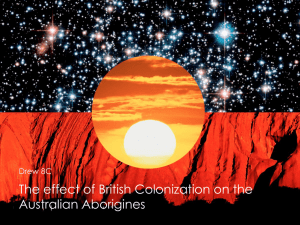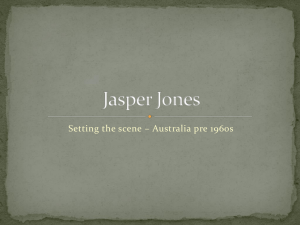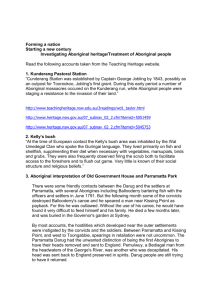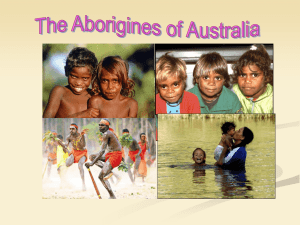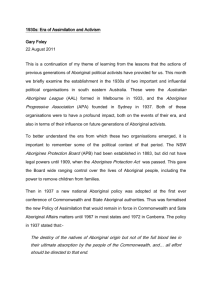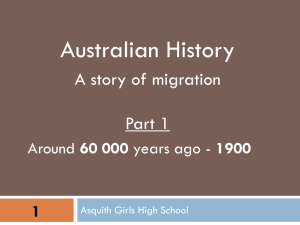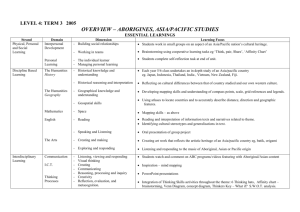1938 Day of Mourning - schs
advertisement
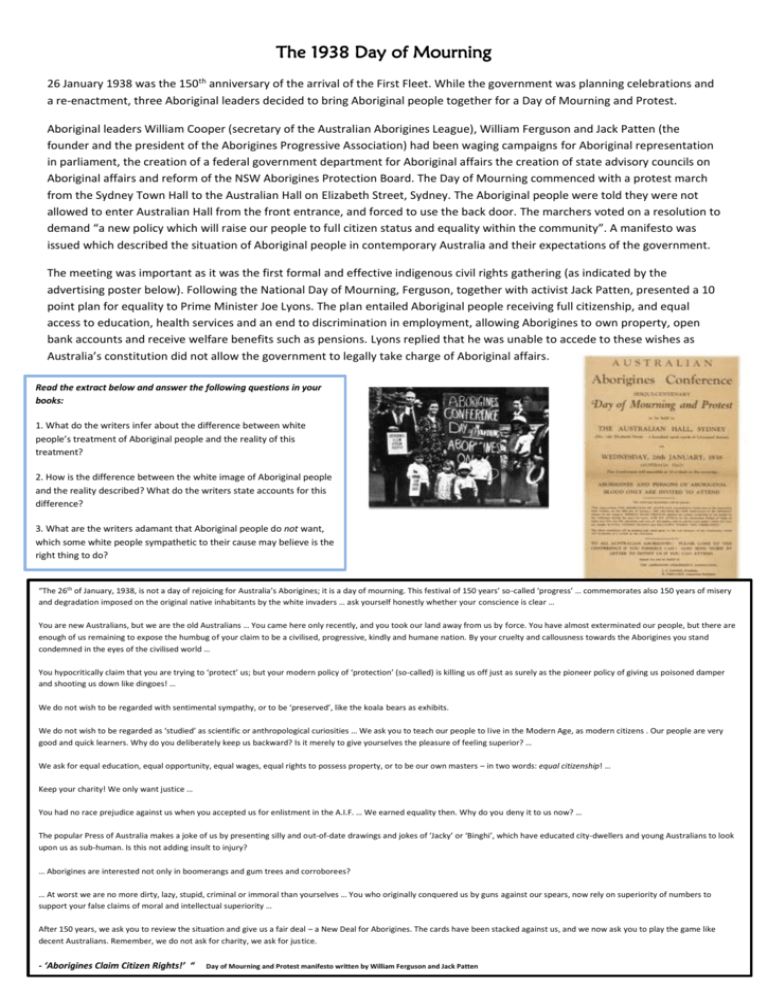
The 1938 Day of Mourning 26 January 1938 was the 150th anniversary of the arrival of the First Fleet. While the government was planning celebrations and a re-enactment, three Aboriginal leaders decided to bring Aboriginal people together for a Day of Mourning and Protest. Aboriginal leaders William Cooper (secretary of the Australian Aborigines League), William Ferguson and Jack Patten (the founder and the president of the Aborigines Progressive Association) had been waging campaigns for Aboriginal representation in parliament, the creation of a federal government department for Aboriginal affairs the creation of state advisory councils on Aboriginal affairs and reform of the NSW Aborigines Protection Board. The Day of Mourning commenced with a protest march from the Sydney Town Hall to the Australian Hall on Elizabeth Street, Sydney. The Aboriginal people were told they were not allowed to enter Australian Hall from the front entrance, and forced to use the back door. The marchers voted on a resolution to demand “a new policy which will raise our people to full citizen status and equality within the community”. A manifesto was issued which described the situation of Aboriginal people in contemporary Australia and their expectations of the government. The meeting was important as it was the first formal and effective indigenous civil rights gathering (as indicated by the advertising poster below). Following the National Day of Mourning, Ferguson, together with activist Jack Patten, presented a 10 point plan for equality to Prime Minister Joe Lyons. The plan entailed Aboriginal people receiving full citizenship, and equal access to education, health services and an end to discrimination in employment, allowing Aborigines to own property, open bank accounts and receive welfare benefits such as pensions. Lyons replied that he was unable to accede to these wishes as Australia’s constitution did not allow the government to legally take charge of Aboriginal affairs. Read the extract below and answer the following questions in your books: 1. What do the writers infer about the difference between white people’s treatment of Aboriginal people and the reality of this treatment? 2. How is the difference between the white image of Aboriginal people and the reality described? What do the writers state accounts for this difference? 3. What are the writers adamant that Aboriginal people do not want, which some white people sympathetic to their cause may believe is the right thing to do? “The 26th of January, 1938, is not a day of rejoicing for Australia’s Aborigines; it is a day of mourning. This festival of 150 years’ so-called ‘progress’ … commemorates also 150 years of misery and degradation imposed on the original native inhabitants by the white invaders … ask yourself honestly whether your conscience is clear … You are new Australians, but we are the old Australians … You came here only recently, and you took our land away from us by force. You have almost exterminated our people, but there are enough of us remaining to expose the humbug of your claim to be a civilised, progressive, kindly and humane nation. By your cruelty and callousness towards the Aborigines you stand condemned in the eyes of the civilised world … You hypocritically claim that you are trying to ‘protect’ us; but your modern policy of ‘protection’ (so-called) is killing us off just as surely as the pioneer policy of giving us poisoned damper and shooting us down like dingoes! … We do not wish to be regarded with sentimental sympathy, or to be ‘preserved’, like the koala bears as exhibits. We do not wish to be regarded as ‘studied’ as scientific or anthropological curiosities … We ask you to teach our people to live in the Modern Age, as modern citizens . Our people are very good and quick learners. Why do you deliberately keep us backward? Is it merely to give yourselves the pleasure of feeling superior? … We ask for equal education, equal opportunity, equal wages, equal rights to possess property, or to be our own masters – in two words: equal citizenship! … Keep your charity! We only want justice … You had no race prejudice against us when you accepted us for enlistment in the A.I.F. … We earned equality then. Why do you deny it to us now? … The popular Press of Australia makes a joke of us by presenting silly and out-of-date drawings and jokes of ‘Jacky’ or ‘Binghi’, which have educated city-dwellers and young Australians to look upon us as sub-human. Is this not adding insult to injury? … Aborigines are interested not only in boomerangs and gum trees and corroborees? … At worst we are no more dirty, lazy, stupid, criminal or immoral than yourselves … You who originally conquered us by guns against our spears, now rely on superiority of numbers to support your false claims of moral and intellectual superiority … After 150 years, we ask you to review the situation and give us a fair deal – a New Deal for Aborigines. The cards have been stacked against us, and we now ask you to play the game like decent Australians. Remember, we do not ask for charity, we ask for justice. - ‘Aborigines Claim Citizen Rights!’ “ Day of Mourning and Protest manifesto written by William Ferguson and Jack Patten

